Human bone marrow stem cell-encapsulating calcium phosphate scaffolds for bone repair
- PMID: 20451676
- PMCID: PMC2994102
- DOI: 10.1016/j.actbio.2010.04.029
Human bone marrow stem cell-encapsulating calcium phosphate scaffolds for bone repair
Abstract
Due to its injectability and excellent osteoconductivity, calcium phosphate cement (CPC) is highly promising for orthopedic applications. However, a literature search revealed no report on human bone marrow mesenchymal stem cell (hBMSC) encapsulation in CPC for bone tissue engineering. The aim of this study was to encapsulate hBMSCs in alginate hydrogel beads and then incorporate them into CPC, CPC-chitosan and CPC-chitosan-fiber scaffolds. Chitosan and degradable fibers were used to mechanically reinforce the scaffolds. After 21 days, that the percentage of live cells and the cell density of hBMSCs inside CPC-based constructs matched those in alginate without CPC, indicating that the CPC setting reaction did not harm the hBMSCs. Alkaline phosphate activity increased by 8-fold after 14 days. Mineral staining, scanning electron microscopy and X-ray diffraction confirmed that apatitic mineral was deposited by the cells. The amount of hBMSC-synthesized mineral in CPC-chitosan-fiber matched that in CPC without chitosan and fibers. Hence, adding chitosan and fibers, which reinforced the CPC, did not compromise hBMSC osteodifferentiation and mineral synthesis. In conclusion, hBMSCs were encapsulated in CPC and CPC-chitosan-fiber scaffolds for the first time. The encapsulated cells remained viable, osteodifferentiated and synthesized bone minerals. These self-setting, hBMSC-encapsulating CPC-based constructs may be promising for bone tissue engineering applications.
2010. Published by Elsevier Ltd.
Figures
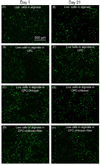
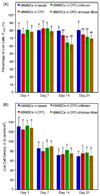


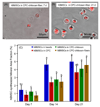
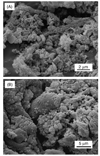
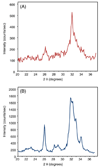
Similar articles
-
Injectable calcium phosphate with hydrogel fibers encapsulating induced pluripotent, dental pulp and bone marrow stem cells for bone repair.Mater Sci Eng C Mater Biol Appl. 2016 Dec 1;69:1125-36. doi: 10.1016/j.msec.2016.08.019. Epub 2016 Aug 10. Mater Sci Eng C Mater Biol Appl. 2016. PMID: 27612810 Free PMC article.
-
Stem cell-calcium phosphate constructs for bone engineering.J Dent Res. 2010 Dec;89(12):1482-8. doi: 10.1177/0022034510384623. Epub 2010 Oct 6. J Dent Res. 2010. PMID: 20929721 Free PMC article.
-
Hydrogel fibers encapsulating human stem cells in an injectable calcium phosphate scaffold for bone tissue engineering.Biomed Mater. 2016 Nov 4;11(6):065008. doi: 10.1088/1748-6041/11/6/065008. Biomed Mater. 2016. PMID: 27811389 Free PMC article.
-
Umbilical cord and bone marrow mesenchymal stem cell seeding on macroporous calcium phosphate for bone regeneration in rat cranial defects.Biomaterials. 2013 Dec;34(38):9917-25. doi: 10.1016/j.biomaterials.2013.09.002. Epub 2013 Sep 18. Biomaterials. 2013. PMID: 24054499 Free PMC article.
-
Stem Cells and Calcium Phosphate Cement Scaffolds for Bone Regeneration.J Dent Res. 2014 Jul;93(7):618-25. doi: 10.1177/0022034514534689. Epub 2014 May 5. J Dent Res. 2014. PMID: 24799422 Free PMC article. Review.
Cited by
-
Highly effective fibrin biopolymer scaffold for stem cells upgrading bone regeneration.Materials (Basel). 2020 Jun 17;13(12):2747. doi: 10.3390/ma13122747. Materials (Basel). 2020. PMID: 32560388 Free PMC article.
-
Novel nanographene oxide-calcium phosphate cement inhibits Enterococcus faecalis biofilm and supports dental pulp stem cells.J Orthop Surg Res. 2021 Oct 9;16(1):580. doi: 10.1186/s13018-021-02736-4. J Orthop Surg Res. 2021. PMID: 34627321 Free PMC article.
-
The use of micro- and nanospheres as functional components for bone tissue regeneration.Tissue Eng Part B Rev. 2012 Feb;18(1):24-39. doi: 10.1089/ten.TEB.2011.0184. Epub 2011 Sep 23. Tissue Eng Part B Rev. 2012. PMID: 21806489 Free PMC article. Review.
-
Bone tissue engineering via nanostructured calcium phosphate biomaterials and stem cells.Bone Res. 2014 Sep 30;2:14017. doi: 10.1038/boneres.2014.17. eCollection 2014. Bone Res. 2014. PMID: 26273526 Free PMC article. Review.
-
Self-setting calcium orthophosphate formulations.J Funct Biomater. 2013 Nov 12;4(4):209-311. doi: 10.3390/jfb4040209. J Funct Biomater. 2013. PMID: 24956191 Free PMC article.
References
-
- Phillips JH, Forrest CR, Gruss JS. Current concepts in the use of bone grafts in facial fractures. Basic science considerations. Clin Plast Surg. 1992;19:41–58. - PubMed
-
- Salgado AJ, Coutinho OP, Reis RL. Bone tissue engineering: state of the art and future trends. Macromol Biosci. 2004;4:743–765. - PubMed
-
- Shanti RM, Li WJ, Nesti LJ, Wang X, Tuan RS. Adult mesenchymal stem cells: biological properties, characteristics, and applications in maxillofacial surgery. J Oral Maxillofac Surg. 2007;65:1640–1647. - PubMed
-
- Mao JJ. Stem cells and dentistry. J Dent Hyg. 2009;83:173–174. - PubMed
-
- Connelly JT, Garcia AJ, Levenston ME. Inhibition of in vitro chondrogenesis in RGD-modified three-dimensional alginate gels. Biomaterials. 2007;28:1071–1083. - PubMed
Publication types
MeSH terms
Substances
Grants and funding
LinkOut - more resources
Full Text Sources
Medical

